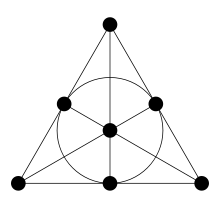In To Sleep in a Sea of Stars, Christopher Paolini introduced the novel card game Scratch Seven. One galactically local mathematician, Aaron Brown, was intrigued and took a deeper look into the game in his paper The Mathematics of Scratch Seven. The amount of thought, work, and time that Mr. Brown put into this is truly impressive.
Mathematics of Storytelling
For the most part, Mr. Brown focuses on the mechanics and strategy of Scratch Seven. However, he also spends some time discussing the mathematics of storytelling, which was of particular interest to Christopher Paolini:
Mathematical structure in creative work
While there are many uses of mathematics in creative activity, perhaps the most basic is to cut down on arbitrary choices. An architect could use any dimensions for a building subject to some basic constraints, but putting things in a golden ratio relation is aesthetically pleasing—whether or not people understand the math. It also simplifies construction and leads to fewer mistakes. Any arbitrary ratio would make one decision for the architect, but the golden ratio has a unique mathematical property that makes all future measurement decisions easy—window size and spacing, number of columns, placement of decorative details, etc.
. . .
A simple way to use a Fano plane to give structure to a story would be to have seven characters, and seven connections, with each connection involving exactly three of the characters. For example, three characters could be fighters, another set of three grew up together, three others had traumatic events in their pasts, three others have physical disabilities, three others are seeking something, three others go on a journey together and three like to drink. If you use a Fano plane structure, any two characters will share exactly one connection, and any two connections (like drunken seeker or a fighter with a traumatic past) will define exactly one character. Author and readers need not understand the math to feel the balanced symmetry of such accounts.
Brown, Aaron, The Mathematics of Scratch Seven, page 3, (August 21, 2023)
Fano Planes
Christopher Paolini was also pleased to see that Mr. Brown recognized his use of Fano Planes while constructing the world, story, and characters of To Sleep in a Sea of Stars. Mr. Brown is the first reader we know of to make this connection.

Fano planes
A Fano plane, named for the Italian geometer Gino Fano (1871 – 1952), is a non-Euclidian projective plane, the smallest one possible. It has all kinds of fun properties and pops up in many fields of mathematics. It can be defined as seven points connected by seven lines segments as in the diagram below (the circle in the diagram counts as a line segment, which is what makes the Fano plane non-Euclidian, you can’t satisfy all the pattern rules using only straight line segments). Each line segment connects three points, each point is on three line segments. Any two points define a unique line segment, and any two line segments meet in a unique point.
Brown, Aaron, The Mathematics of Scratch Seven, page 2, (August 21, 2023)
Play Scratch Seven
If you’re eager to play and looking for the basics visit the Scratch Seven page here in the Fractalverse. Played the game? Let Christopher know on Facebook, Instagram, Twitter, or TikTok.
Until next time . . . eat the path.

